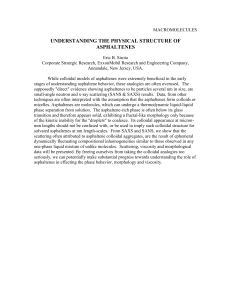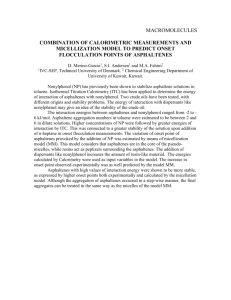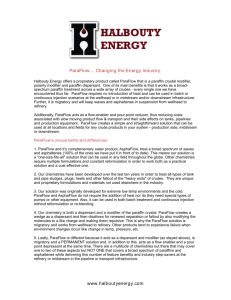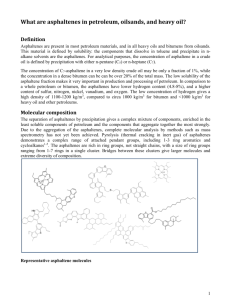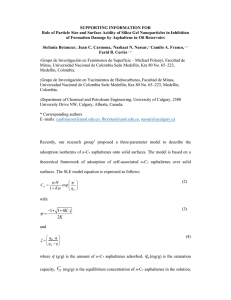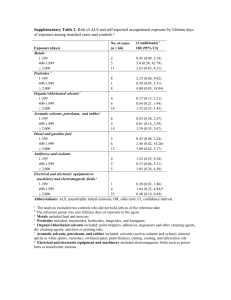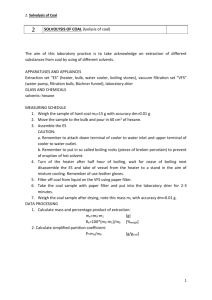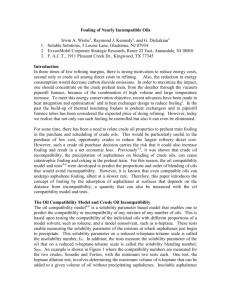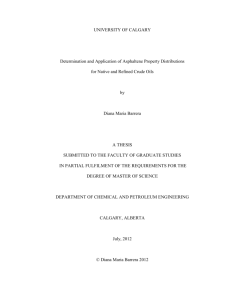pereira - University of Alberta
advertisement
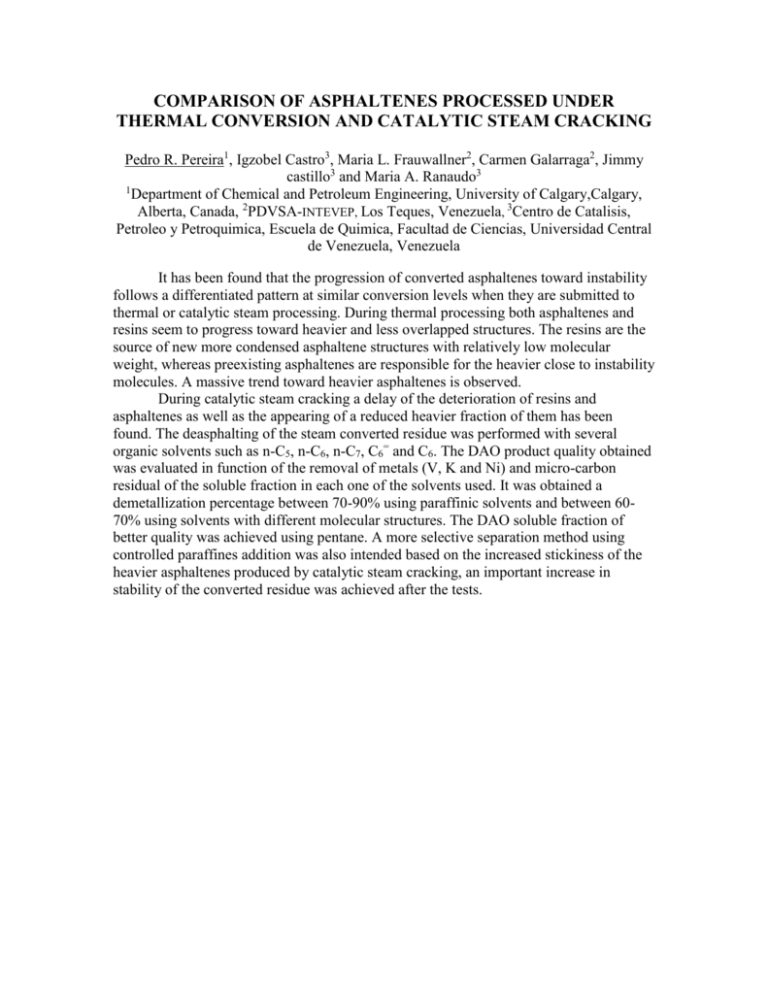
COMPARISON OF ASPHALTENES PROCESSED UNDER THERMAL CONVERSION AND CATALYTIC STEAM CRACKING Pedro R. Pereira1, Igzobel Castro3, Maria L. Frauwallner2, Carmen Galarraga2, Jimmy castillo3 and Maria A. Ranaudo3 1 Department of Chemical and Petroleum Engineering, University of Calgary,Calgary, Alberta, Canada, 2PDVSA-INTEVEP, Los Teques, Venezuela, 3Centro de Catalisis, Petroleo y Petroquimica, Escuela de Quimica, Facultad de Ciencias, Universidad Central de Venezuela, Venezuela It has been found that the progression of converted asphaltenes toward instability follows a differentiated pattern at similar conversion levels when they are submitted to thermal or catalytic steam processing. During thermal processing both asphaltenes and resins seem to progress toward heavier and less overlapped structures. The resins are the source of new more condensed asphaltene structures with relatively low molecular weight, whereas preexisting asphaltenes are responsible for the heavier close to instability molecules. A massive trend toward heavier asphaltenes is observed. During catalytic steam cracking a delay of the deterioration of resins and asphaltenes as well as the appearing of a reduced heavier fraction of them has been found. The deasphalting of the steam converted residue was performed with several organic solvents such as n-C5, n-C6, n-C7, C6= and C6. The DAO product quality obtained was evaluated in function of the removal of metals (V, K and Ni) and micro-carbon residual of the soluble fraction in each one of the solvents used. It was obtained a demetallization percentage between 70-90% using paraffinic solvents and between 6070% using solvents with different molecular structures. The DAO soluble fraction of better quality was achieved using pentane. A more selective separation method using controlled paraffines addition was also intended based on the increased stickiness of the heavier asphaltenes produced by catalytic steam cracking, an important increase in stability of the converted residue was achieved after the tests.
